Soviet Motor Rifle Company vs West German Panzergrenadier Company, West Germany, 1989
This was a Soviet attack on a West German position on the Central Front. It was a test game for a few new features including this particular attack-defence set-up with the Soviets having a points advantage of 2.5:1. against a well-equipped defence. here follows a few photos and a quick summary of the action.
The West German Force (Morale - Regular, Training - Trained)
The Soviet Force (Morale - Regular, Training - Trained)
Here is a view of the table from the east (the Soviet entry edge) with the Germans partially deployed:
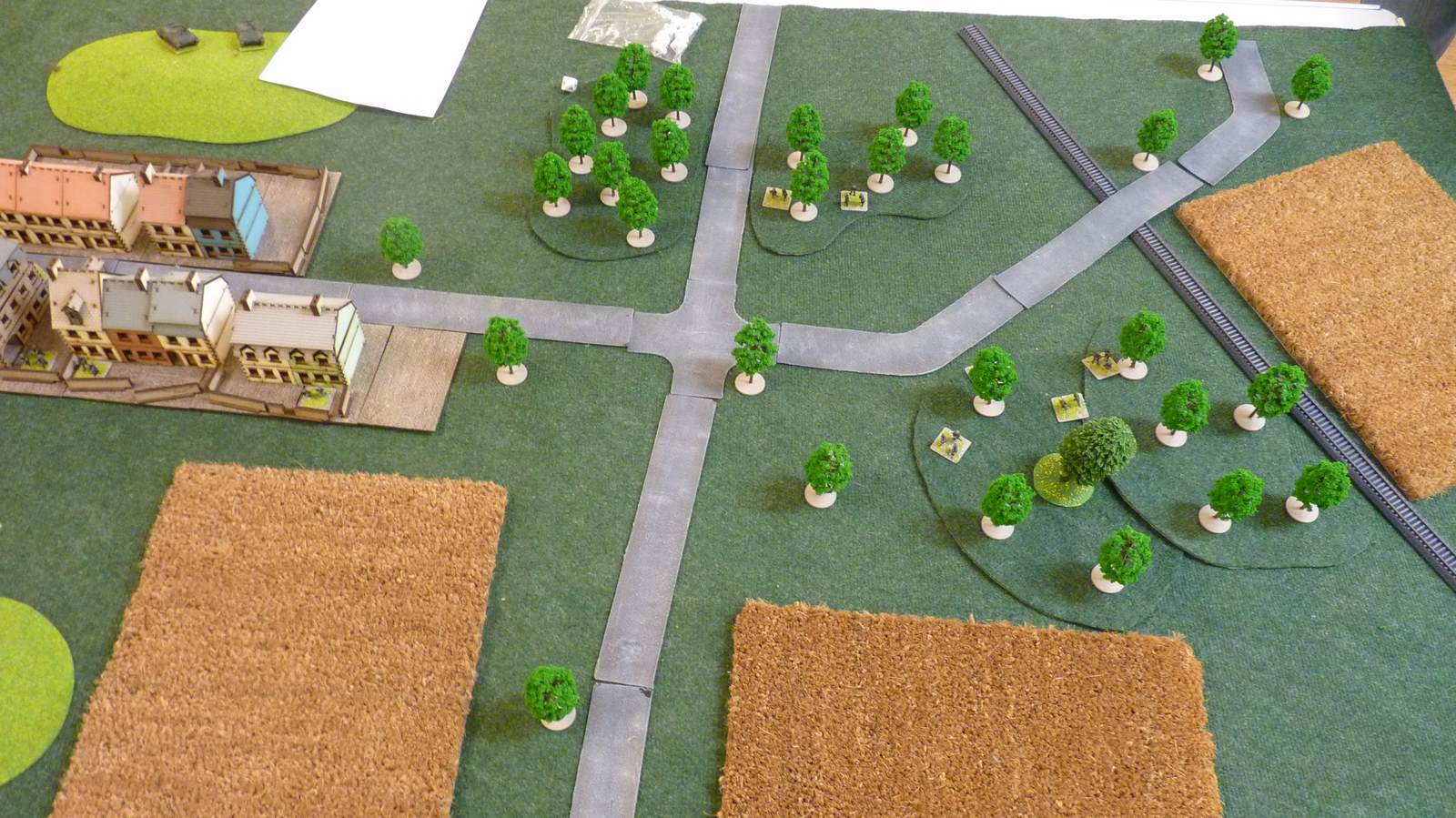
There were the 4 objectives for the Soviets to capture; the 3-storey building on the left of the picture, the low ridge on the left near the German baseline, the crossroads and the crossing over the railway line. The woods were dense so prevented vehicle movement and the fields counted as broken ground.
The Germans deployed their first platoon at the forward edge of the village with its Marders behind. The second platoon deployed in the woods with its Marders separated to form a mobile reserve. The Jaguars were placed just behind the ridge at the rear where they had a good field of fire
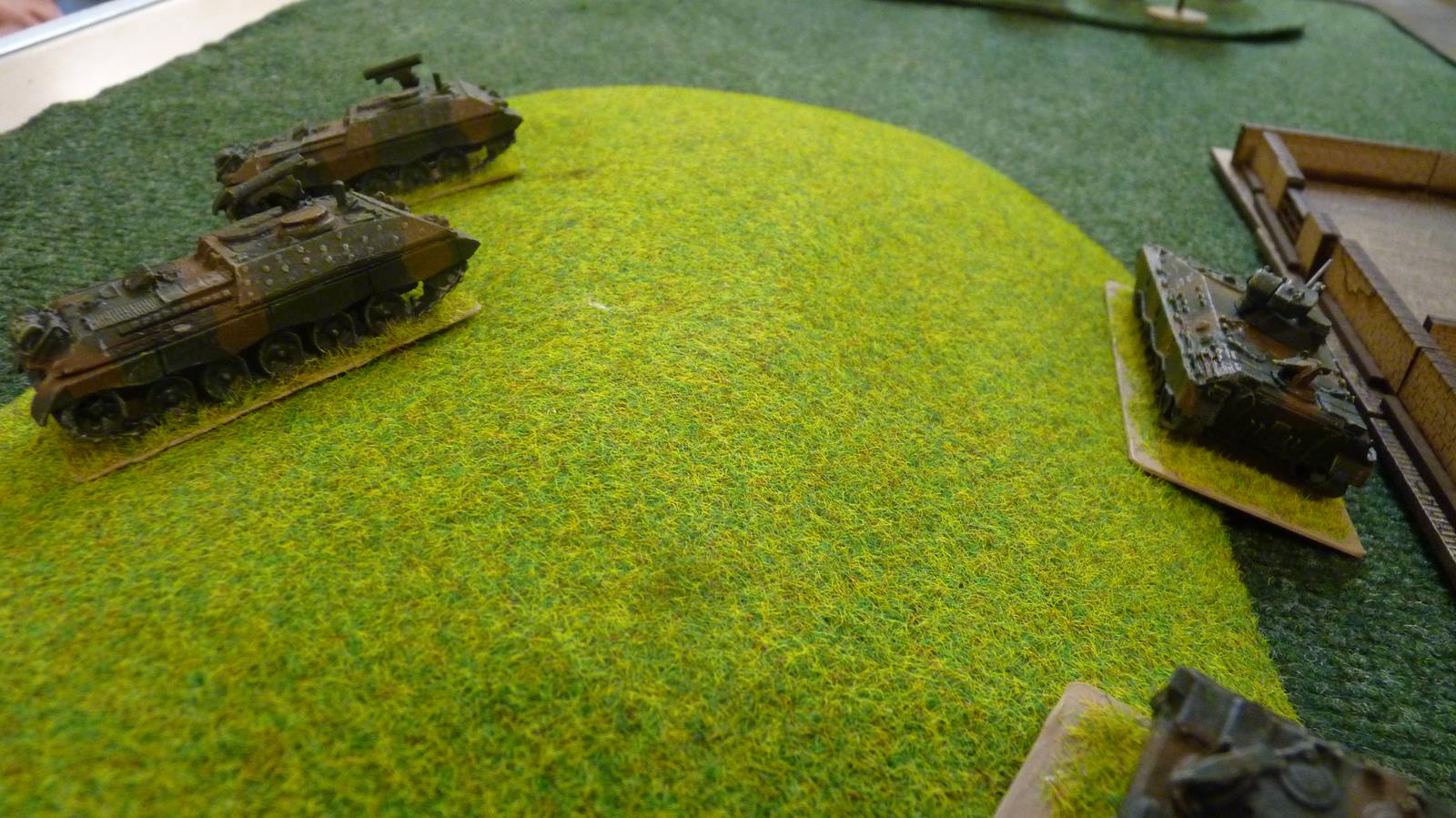
The Soviet programmed artillery bombardment hit the West German postions, inflicting heavy losses on the first platoon but otherwise leaving the the defending force intact.
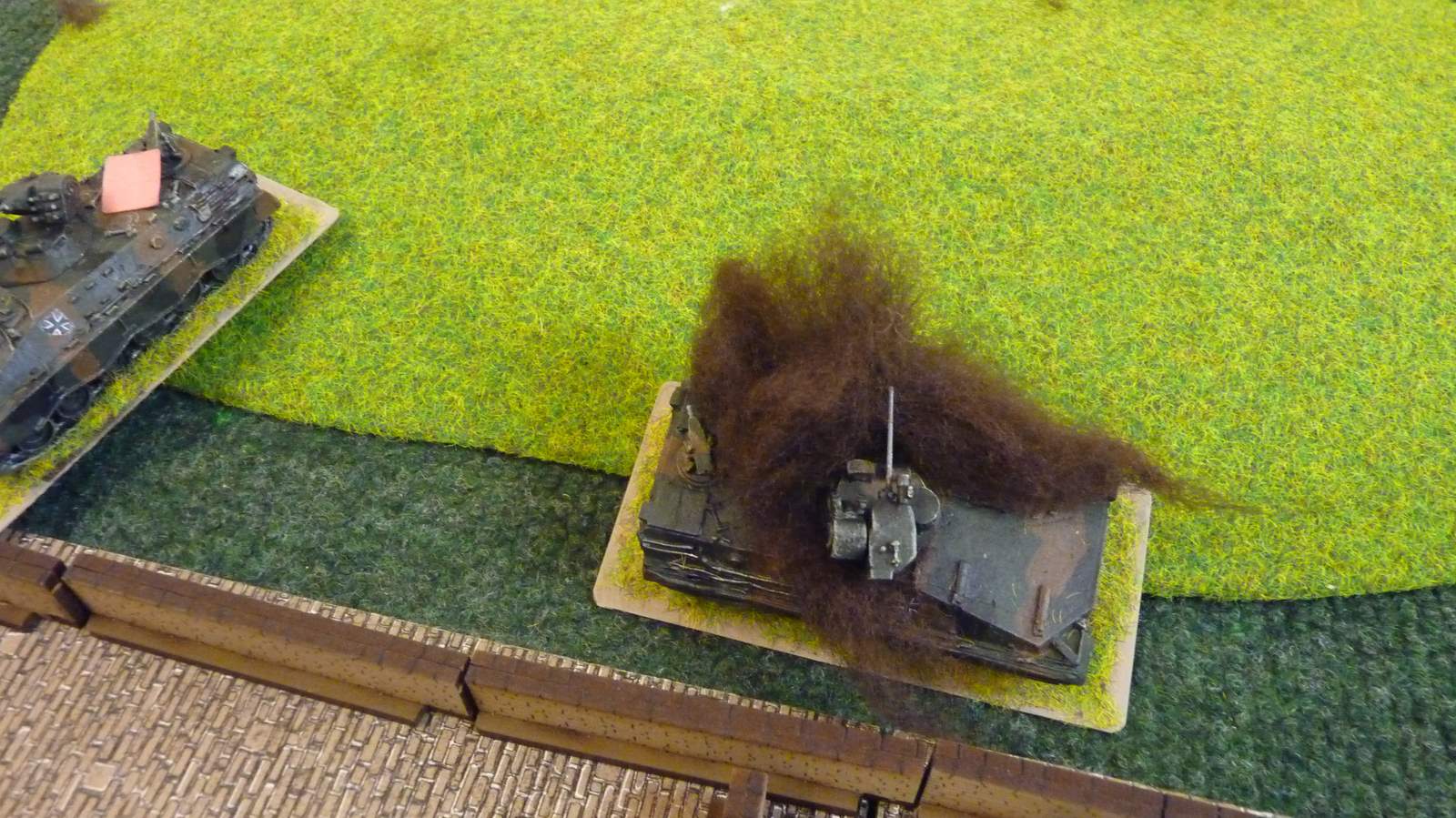
The Soviets split the tank platoon to attach 1 tank to each infantry platoon and the CHQ, then launched a three-pronged assault. The first platoon attacked on the left towards the town with its attached tank leading.
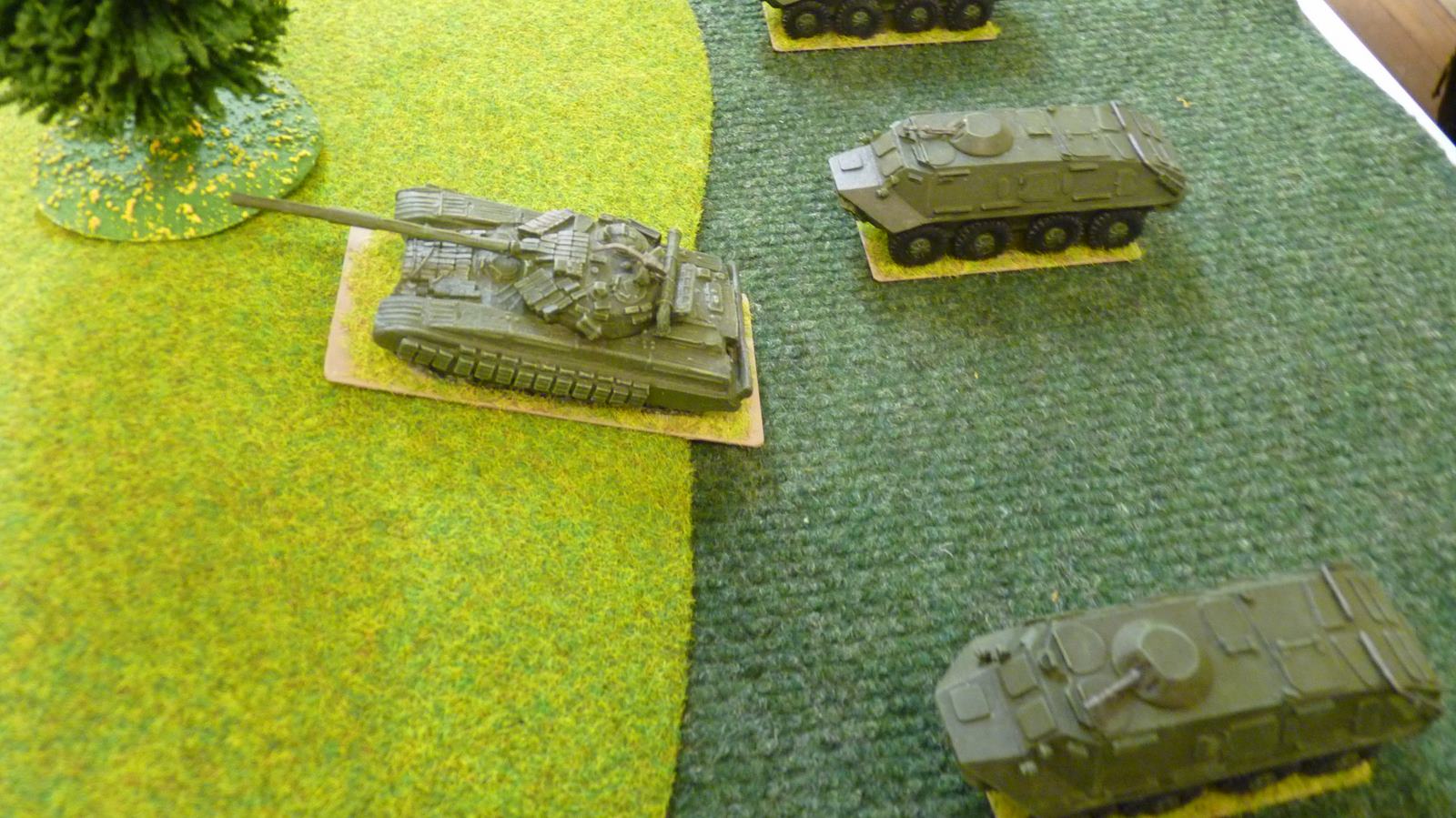
The Soviet second platoon advanced on the right of the first platoon and the third platoon made for the level crossing on the right. The recce platoon moved along the road to flush out any capitalists lying in wait.
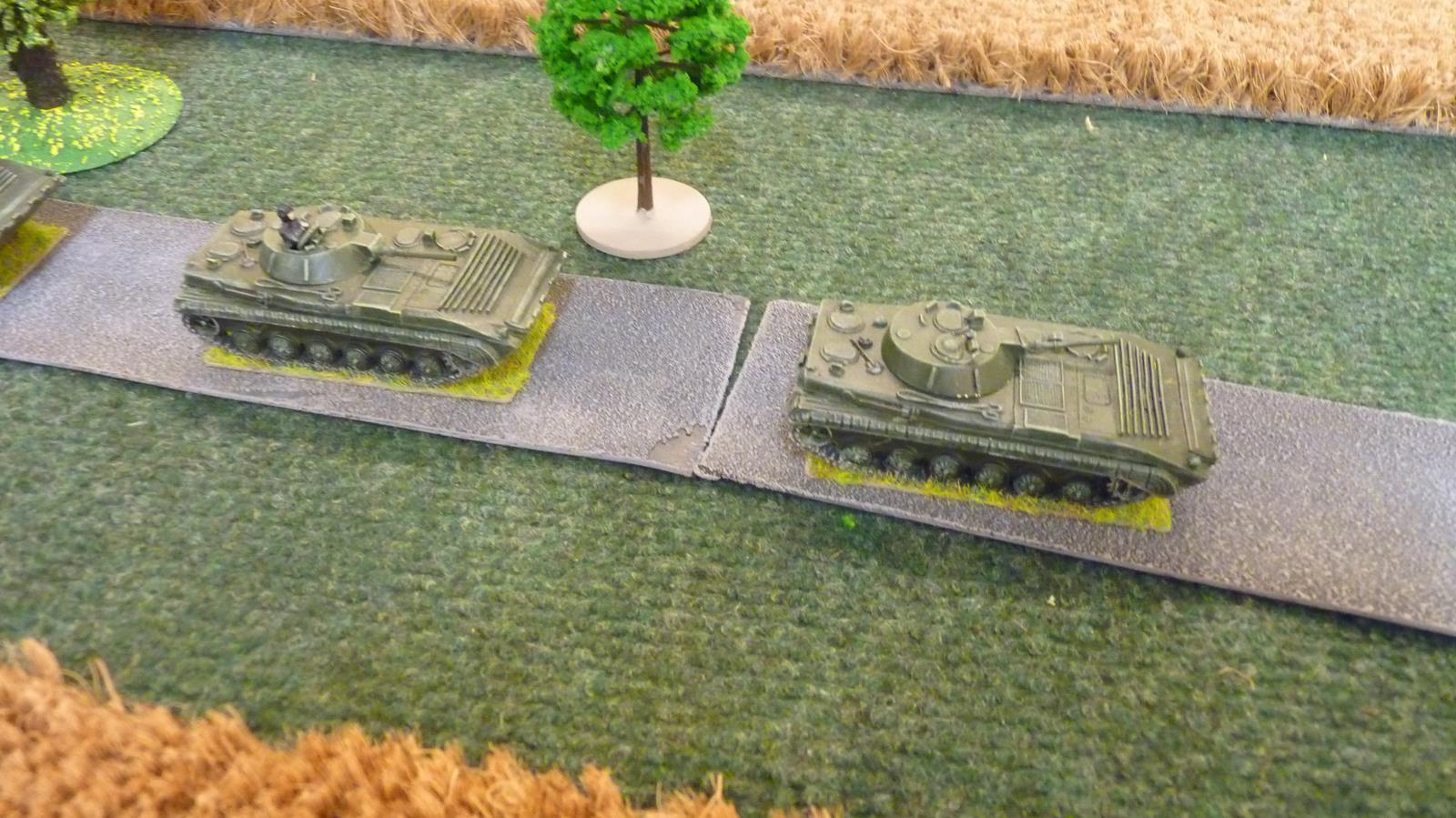
They succeeded when a Marder concealed at the edge of a wood revealed itself to open fire.
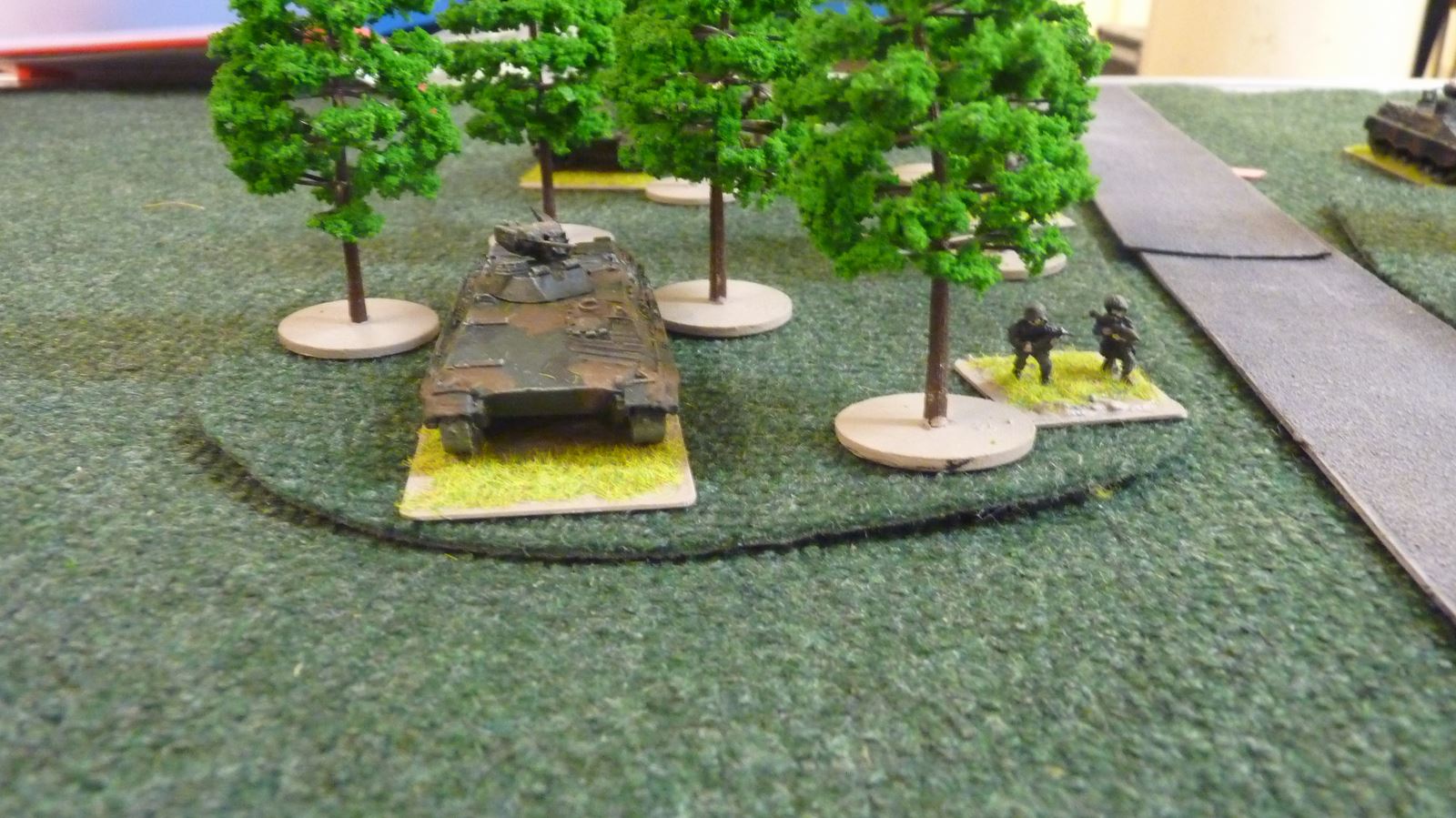
The first BRM was hit by 20mm cannon fire and knocked out. Its passengers escaped but were soon accounted for by G3 and MG3 fire from the woods to their right. As a recce recce unit the platoon had a chance of reacting to pull back, but it failed the training test that would have enabled it to do so. The platoon also failed a pair of morale tests so was unable to advance further. The remaining BRMs fired back at the Germans and succeeded in destroying the Marder at the wood edge. More Marders quickly moved forward to join in and, after a brief firefight, the Soviet recce platoon was rendered completely combat ineffective.
As the Soviet first platoon neared the edge of the village it came under inaccurate fire from the Panzerfausts of the German first platoon. The Soviets responded with HMGs to swiftly removed the threat. These losses, combined with the earlier casualties from the bombardment were too much for the defenders who fled in the face of the Soviet assault.
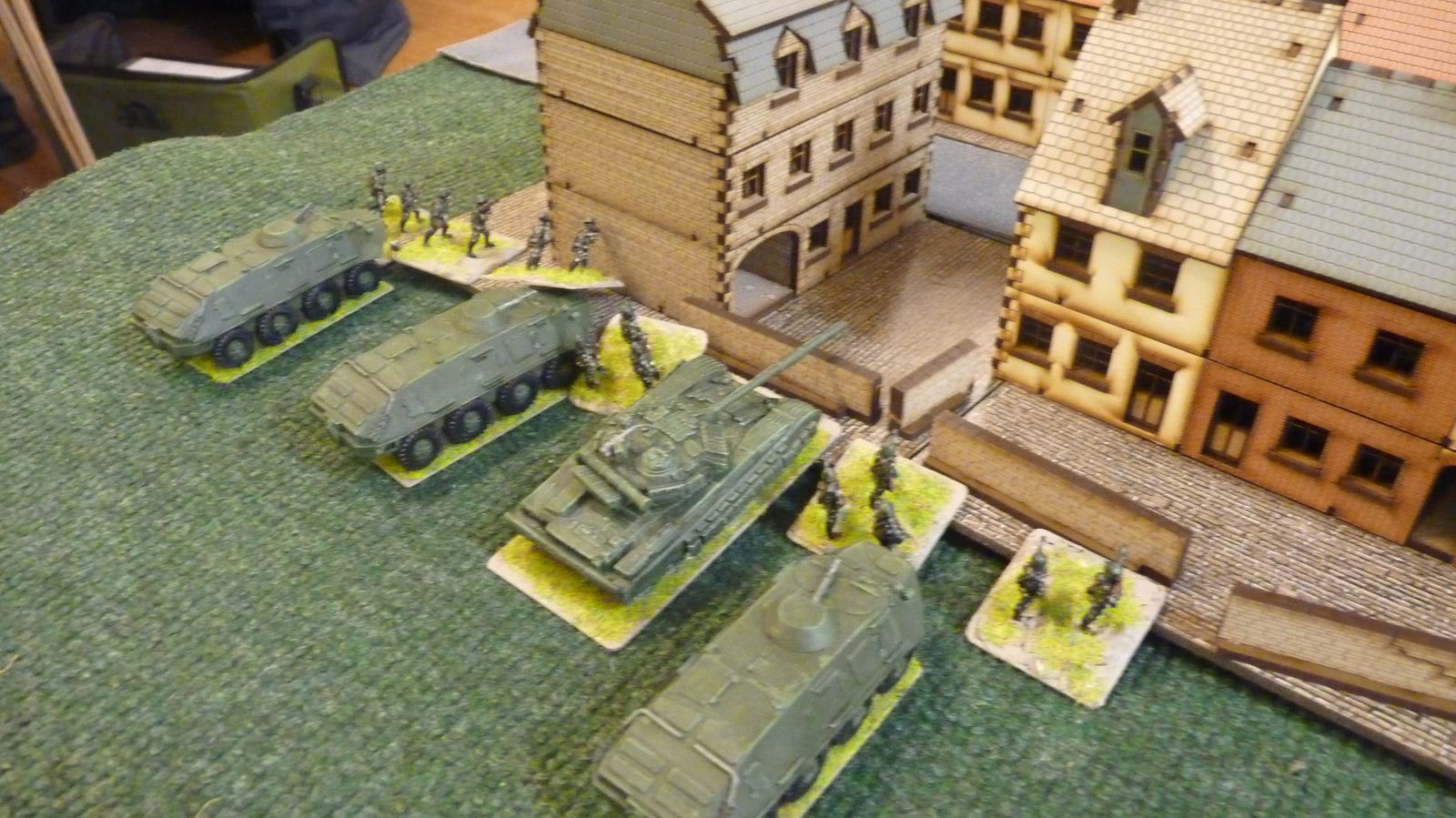
On the right, the Soviet third platoon dismounted from their APCs to clear the wood. Supported by the fire of 2 tanks, they overwhelmed the small force holding the wood.
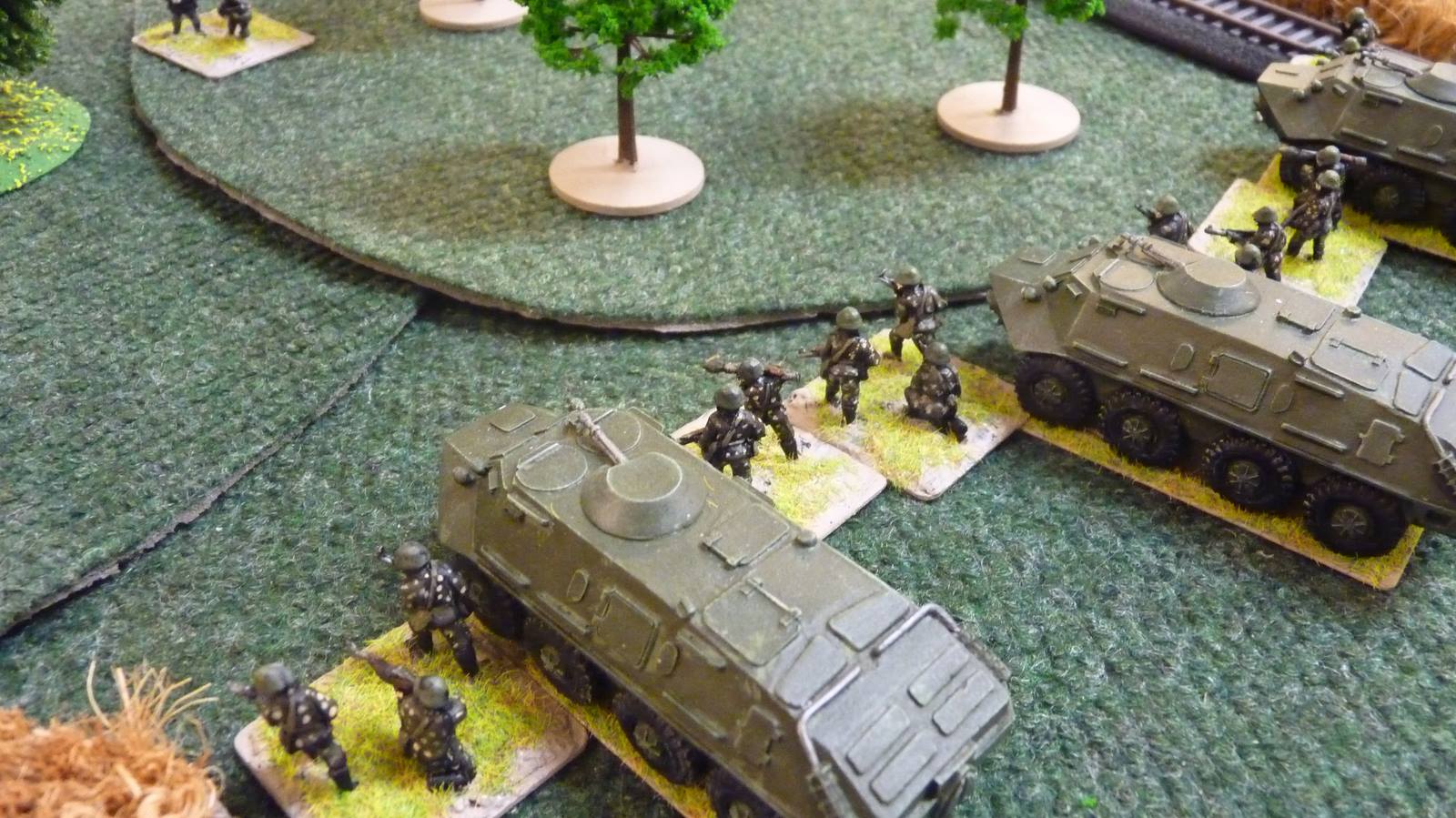
As attention was fixed on the wood a Marder saw an opportunity and put several 20mm armour piercing rounds into the ACRV2, destroying the vehicle and killing the AOO. A T64 dodged a Milan and the company commander lived a charmed life as 2 Milans missed his vehicle; he quickly sought cover as the tanks dealt with the Marders.
In the centre, the Soviet second platoon came under fire from infantry, Marders and the Jaguars losing 2 APCs and some infantry.
On the Soviet right, as the infantry cleared the village their vehicles skirted the buildings and pressed towards the objective ridge, but came to the attendtion of a Marder lying in wait, cannon and Milan loaded and ready.
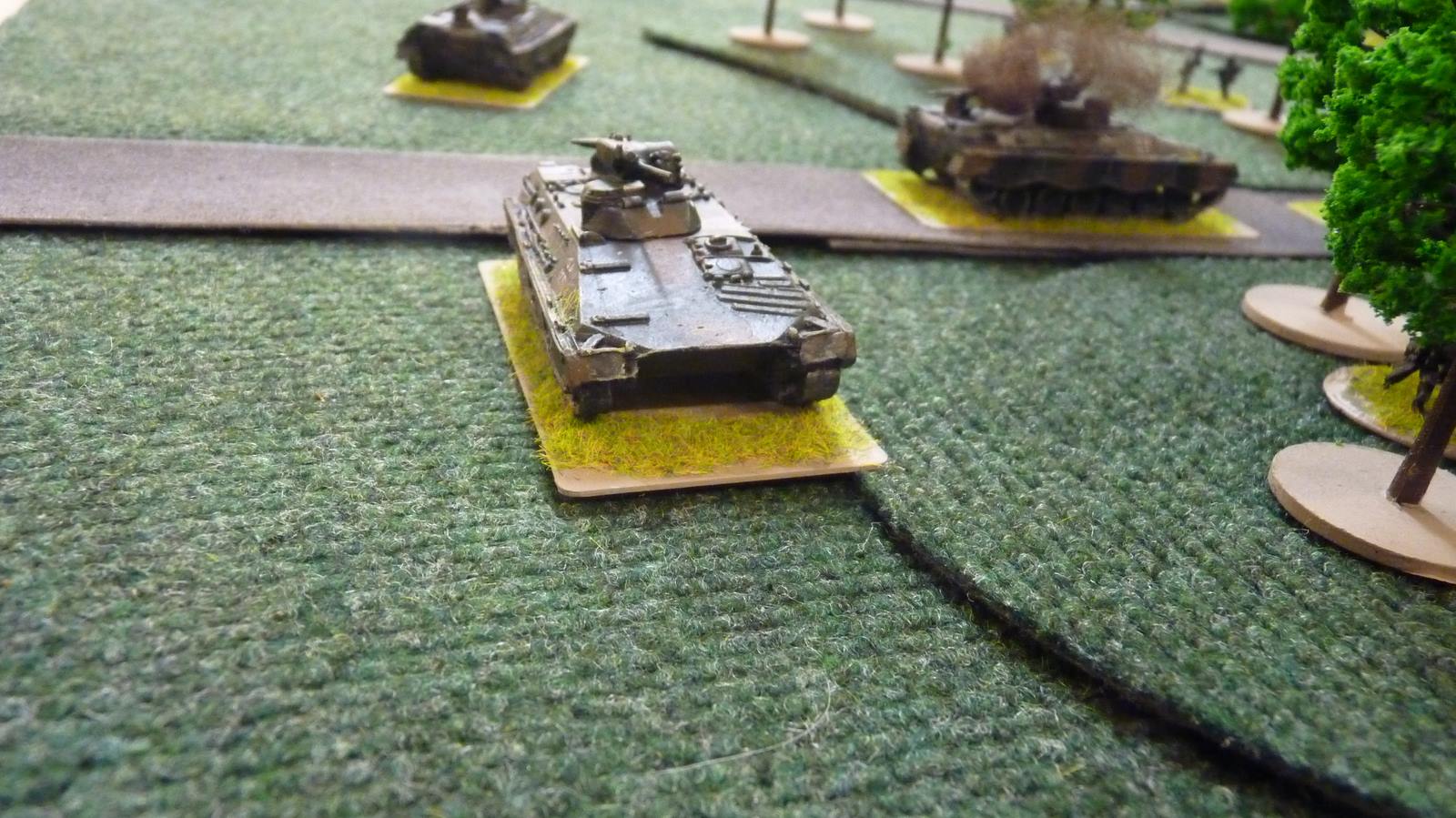
It was the critical point of the battle. The Soviets were threatening to take all 4 objectives but the Germans still had enough firepower left to stop them them if they could inflict some quick kills.
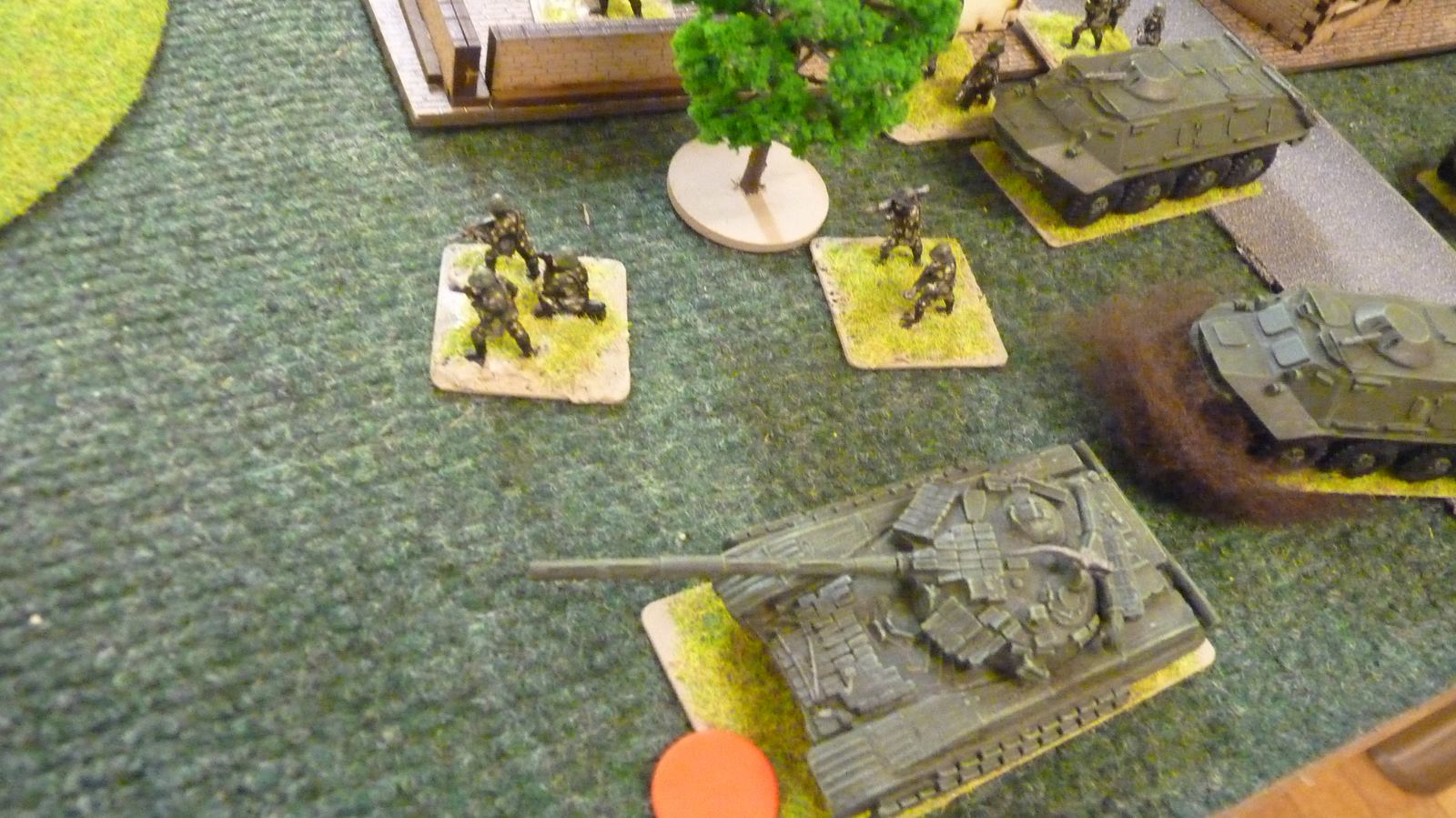
Verdict
A win to the Red Army! The West Germans destroyed a tank and 8 other AFVs but couldn't hold the attack. The programmed artillery only affected one platoon but did so sufficently to render that sector of the table very diffcult to defend. A tactical call made by the German commander that didn't work was the decision to leave the Milans on the Marders instead of dismounting them. Milans distributed along the front would have made life dangerous for the BTRs and hazardous even for the T64s. The Soviet commander took a risk with the recce platoon - a very potent unit - that led to its destruction for little gain, and got away with not laying down smoke to cover his advance. Moments of carelessness cost a tank, the AOO and very nearly the company commander, whose loss could have proved costly. A good game and an effective test of the rules.